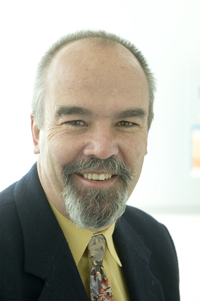Significantly improving access to cancer diagnosis and treatment in rural areas will be needed to address a projected 40 per cent growth of cancer nationally, according to Professor Rob Davidson, the head of medical radiation science at Charles Sturt University (CSU).
 Professor Davidson’s comments follow CSU’s application to the federal Education Investment Fund (EIF) for $63.6 million to significantly expand the range of health science courses offered in Orange and Bathurst to address current and future health workforce shortages in rural areas.
Professor Davidson’s comments follow CSU’s application to the federal Education Investment Fund (EIF) for $63.6 million to significantly expand the range of health science courses offered in Orange and Bathurst to address current and future health workforce shortages in rural areas.If the application is successful, the University will deliver 17 new health courses in Orange and Bathurst, with a further four existing courses expanded to meet future workforce needs.
“Part of the funding will be used will establish new courses in medical imaging and nuclear medicine in Orange, and commence a new program in radiation therapy. This will address shortages of professionals to provide diagnostic and treatment services in rural and remote communities,” Professor Davidson said.
“According to the Australian Institute of Health and Welfare, the number of cases of cancer diagnosed in Australia will reach around 150 000 in 2020, an increase of almost 40 per cent from 2007.
“We know that cancer survival rates are worse for people who live in rural and regional areas.
“The National Rural Health Alliance has argued that people with cancer in remote areas of NSW are 35 per cent more likely to die within five years of diagnosis than patients in metropolitan areas. For prostate and cervical cancers, patients in remote NSW were up to three times more likely to die within five years of diagnosis.
“A recent Queensland study found that rates of death among rectal cancer patients increase by 6 per cent for every extra 100 kilometres a patient lives from a radiation therapy facility; 16 per cent for those living between 100 and 199 kilometres away; and 30 per cent for those living 200-399 kilometres away.
“Indigenous Australians, who comprise a large proportion of many rural communities, die from lung cancer at almost twice the rate of non-Indigenous Australians, and Indigenous females die from cervical cancer at five times the rate of non-Indigenous females.
“To help address this, the Government has invested in a number of new radiation oncology services in regional centres. It has been recognised that providing such services, especially radiation treatment for cancer, closer to the where patients live is important, not just from a financial point of view.
“Having cancer treatment facilities and services in regional centres means better uptake by rural people of cancer treatment services, more support from family and friends during treatment, and better patient outcomes.
“However, these new facilities will have limited value unless there are sufficient diagnostic and treatment professionals to staff these facilities.
“Staffing demands in radiation oncology are not currently being met in Australia. Services in regional centres are having even greater problems recruiting trained staff to provide the treatment services.
“Education and training in medical imaging, nuclear medicine, and radiation therapy needs to be offered and run in regional centres. It is well recognised that students who are educated and trained at regional universities are significantly more likely to stay in regional communities to work.
“Charles Sturt University’s Education Investment Fund application has been targeted to address areas of chronic health workforce shortage in rural areas to ensure we can meet current and future demand for health services in rural communities,” Professor Davidson said.





Social
Explore the world of social